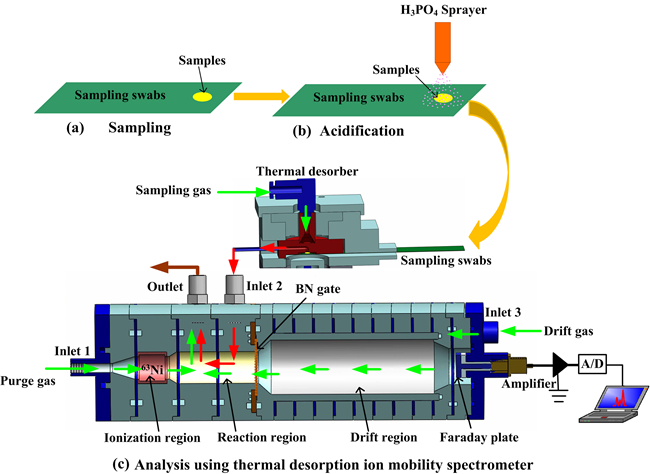DICP Research Group102 led by Prof. Haiyang Li became the first to use stand-alone ion mobility spectrometry (IMS) via acid-enhanced vaporization technique to detect in organic explosives. A detection limit of 100 pg and detection period less than 5 seconds was achieved. The group’s result was published in Scientific Reports (http://www.nature.com/srep/2014/141016/srep06631/full/srep06631.html).

In China, inorganic explosives are important because they are readily available, have a relatively low cost, and components to make the explosives are not legally restricted to purchasers. Every year, the illegal construction and use of inorganic explosives leads to significant property loss and death. However, up to now, there have been no instruments and methods for field-detection of these inorganic explosives. While ion mobility spectrometry has become the main method for organic explosives detection, the detection of inorganic explosives has remained a challenge due to their low volatilities. Prof. Li et al proposed an innovative strategy for detecting trace inorganic explosives by thermal desorption IMS based on in situ acidification of the sampling swabs with a sample-to-sample analysis time of less than 5s. The detection response for common oxidizers in inorganic explosives, such as KNO3, KClO3 and KClO4, were enhanced by at least 3000 times over previous methods, with detection limits as low as 100 pg. Typical inorganic explosives, such as black powders, firecrackers, and matches, could be detected at high sensitivity as well.
It is easy to imagine that this new type of IMS and analytical method for the detection of trace organic and inorganic explosives can be useful in transportation security, such as inspection stations at airports and railway stations.